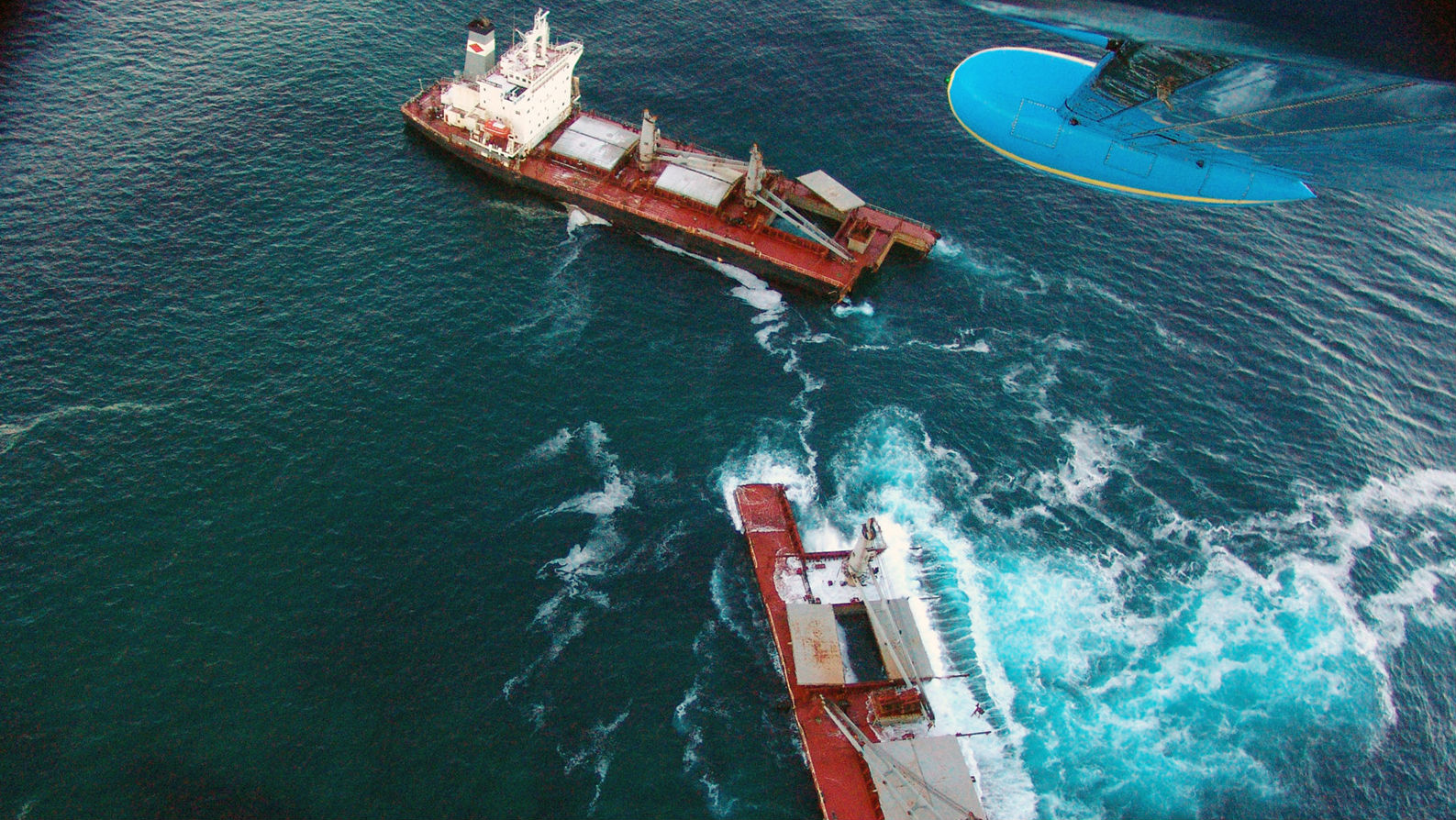New Rules for Alaska's Aleutian Islands

IMO has approved protective buffer zones (“Areas to be Avoided”) around Alaska’s Aleutian Islands, approximately ten years after a massive shipping disaster occurred off its coasts.
In December 2004, the M/V Selendang Ayu foundered off the Aleutians amidst severe weather and was blown to shore, eventually breaking into two pieces. The accident caused more than 300,000 gallons of heavy fuel oil to spill into pristine marine waters and resulted in the deaths of six crew members.
Shipping in and around the Aleutian Islands is significant. In 2012, nearly 2,000 individual vessels made more than 4,600 transits through Unimak Pass at the eastern end of the island chain. Traffic through the islands, as well, is projected to increase substantially over the next few decades, due to expanded trade between Asia and North America.
In addition, fossil fuel exports from the Alberta tar sands, Bakken shale oil from the Dakotas, and coal from the Powder River Basin could also be transported to Asia through the Aleutians, further contributing to vessel traffic figures.
This intense shipping activity, which includes many large vessels carrying immense quantities of heavy oil for fuel, traverses fragile Aleutian waters and shores teeming with marine life. The area is home to millions of sea birds, endangered marine mammals such as the Stellar sea lion, and unique cold water corals. Valuable commercial fisheries also are prevalent, and Aleut communities engage widely in subsistence use practices.
As a consequence of the tragic M/V Selendang Ayu incident, a comprehensive shipping risk assessment was undertaken with company plea agreement funds. The Transportation Research Board of the National Academies designed the assessment’s framework, and consulting firms conducted numerous studies and analyses over a five-year period that identified and quantified risks to navigational safety and the environment, and measures to reduce those risks.
Under the leadership of the Coast Guard and other entities, these measures were vetted by various teams, including an advisory body composed of representatives from the shipping sector, fishing industry, conservation field, and the subsistence use community.
This multi-stakeholder process yielded several recommendations, including, among others, the placement in the Aleutians of a designated assist tug and the establishment of Areas to be Avoided. The latter suggestion was formally brought forward by the U.S. government to IMO last week.
The five proposed Areas to be Avoided encompassing the Aleutian Islands stretch for some 1200 miles across the North Pacific and generally extend no more than 55 miles from the shoreline. This new buffer area provides critical time for a powerless, drifting vessel to undergo repairs, or to launch an emergency response effort. The protected zone also reduces the likelihood that a ship will run aground.
John Kaltenstein, marine policy analyst at Friends of the Earth, issued the following statement in response to events that unfolded at IMO: “The International Maritime Organization’s action today, in approving Areas to be Avoided around the Aleutian Islands, is a strong statement of support for this unique Arctic Alaskan marine habitat, for native subsistence users, and for mariner safety in the region. Minimizing risks from international shipping is important in all waters but vital to Arctic waters, many of which remain insufficiently or entirely unprotected.
“Friends of the Earth will continue to focus on attaining sensible shipping-related protections for the Arctic, a region where climate disruption is accelerating and industrial and commercial activities are progressing at unprecedented levels.”
